Note: Don’t try to use spray adhesive instead of modge podge like I did this time- it doesn’t work!
How to Successfully Paint an Abstract Painting

Hello, I’m Tamara, visiting again from Provident Home Design where I blog about design, decorating, and lots of DIY. I was here last on Remodelaholic sharing a simple tutorial on how to build a pedestal accent table. I’m glad to be back today!:-)
It use to be that abstract paintings were associated with a modern style of decorating but these days they are readily incorporated in a variety of decorating genres. Currently, stores such as Pottery Barn, Wisteria, and Ballard Designs all offer abstract paintings to their consumers (and they are not inexpensive).
Do you love the look of abstract paintings? Then you are in luck–this post will teach you how to create your very own abstract masterpiece! There is something very personal and rewarding about decorating a room with art you created with your own hands (and heart).
I am not an artist by trade however I have managed to create a few paintings my home. I recently re-decorated my living room and needed wall art for behind the couch. A large abstract painting was just what the space was calling for.

I reused a large canvas I already had. You can purchase a canvas in a variety of sizes at stores such as Joann Fabrics, Hobby Lobby, and Michaels (hint: print out a 40% coupon to make it even less expensive).
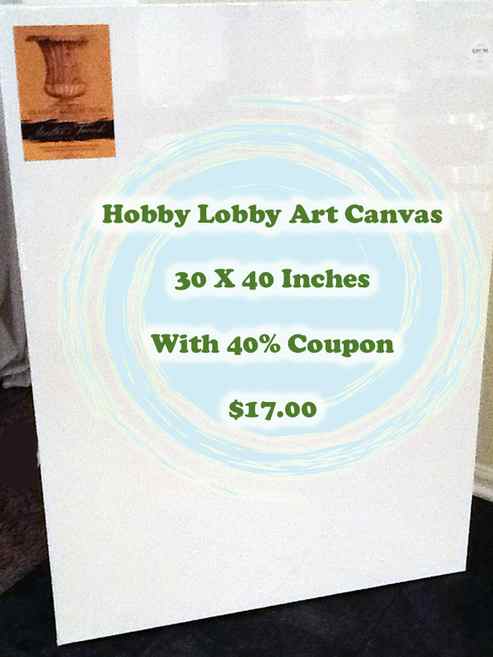
5 Easy Steps to Successfully Painting your own Abstract Painting
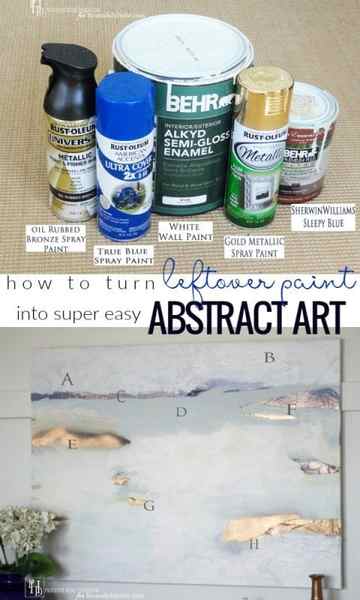
…and colors that are already in the room you are creating the painting for! I learned this the hard way.
Last Spring I fell in love with a painting with bright yellows, bright greens, and white. I worked hard on creating my own version of this painting and then once I put it up in my house I realized although I still loved the painting it wasn’t “my colors”.
I prefer my house to be calm and relaxing where as the bright painting was loud and energizing. Plus the colors didn’t really go with the color scheme I had already going in my family room (very pale yellow, blues, and turquoise). So don’t make the same mistake! Choose colors that you love and make sure they are the same as or at least complement the colors already used in the room.
For this painting I used white, gold, and blues to match the décor already in my living room.

Find inspiration.
Before you start, it might be helpful to look around at other abstract paintings to see what you like as a frame of reference or to inspire the design of your painting. For example, I was inspired by this Pottery Barn painting to use a lot of white in my painting and for my paint strokes to move horizontally.
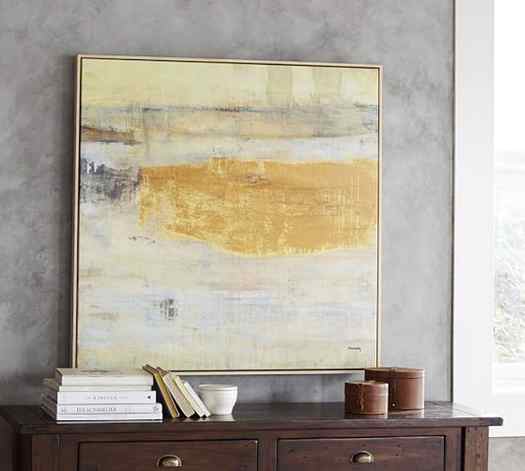
As you can see below my painting is very different than my inspiration painting. I used the inspiration painting only as a jumping off point in creating my own abstract painting.

No Art Skills Required DIY Pulled Paint Abstract Painting
Would you believe me if I told you that creating abstract artwork is easier than you think and that if you didn’t have a creative bone in your body you could still paint one? I promise… it’s no lie! I recently was playing around with an old technique and decided with a little update, it was a great way for anyone to paint abstract art on a smaller scale. This is a little different than string pull painting. To create this DIY Pulled Paint Abstract Painting, you just need some acrylic paint, either regular tube-style artist paint, or craft paint bottles, canvas size of choice and stiff cardstock or cardboard. There’s a video below you can watch on how to paint the paint pulled abstract canvas, or you can skip right to the step by step images below.
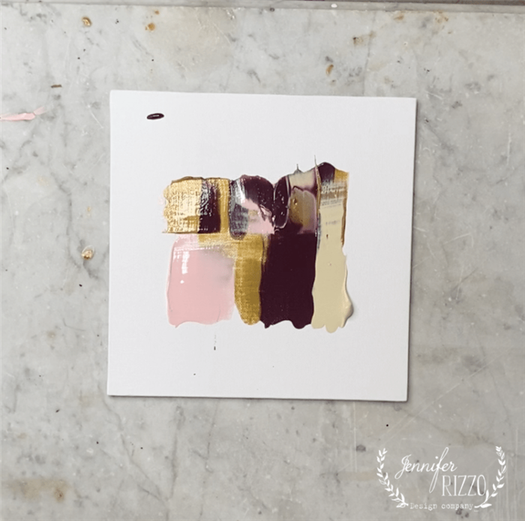
For this project, you’ll need these supplies: canvas, acrylic paint colors of choice, medium or heavy body titanium white acrylic paint, and either cardboard or heavy cardstock. Either one works, they just give two different looks. I painted this project on small canvases, but this would be so fun to do on a huge canvas! You’ll also want the medium or heavy bodied artist paint for the last step; that’s what gives it the “artist canvas” feel.
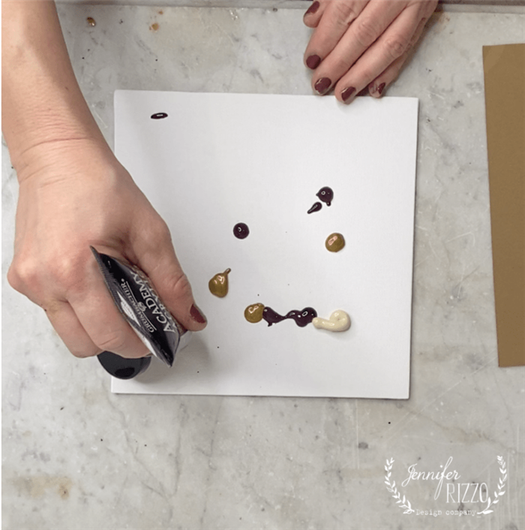
Start by adding either random drops of paint on the blank canvas, or as you can see in the video, make lines across the top. There’s no wrong answer, it just depends on the look you’re going for.
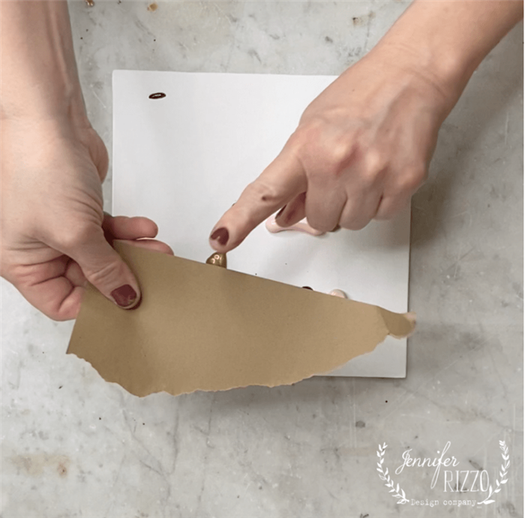
Use the edge of a stiff piece of paper or cardboard to “paint with.”
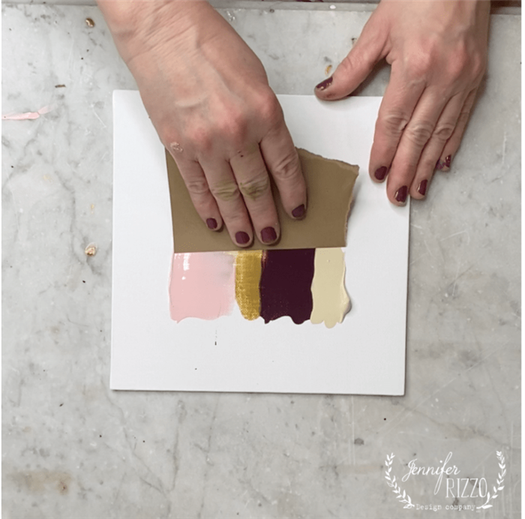
Pull the acrylic paint across the canvas in one direction. The pressure you add will determine the look of the piece. Lighter pressure will leave more paint on the canvas and heavier pressure will remove more. With heavy enough pressure you can “scrape” the paint off completely, exposing the canvas underneath for a different look. For this piece, I kept fairly even, medium pressure the entire time. I went back and gave the edge of my painting a dab of left over paint on my cardboard to add interest.
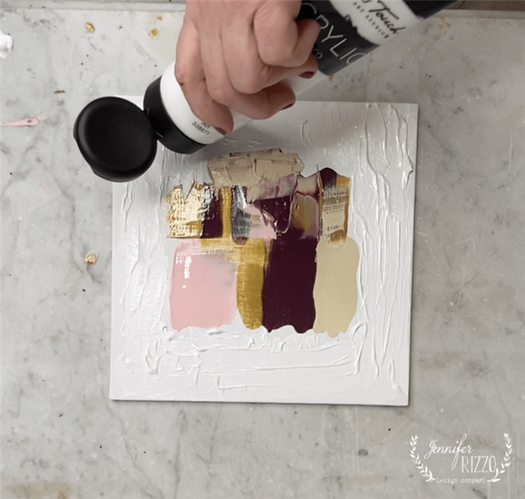
Don’t worry about any drips along the edges. After the DIY Pulled Paint Abstract Painting is dry, the edges are painted white with a brush up to the abstract area to add texture and cover any drips.
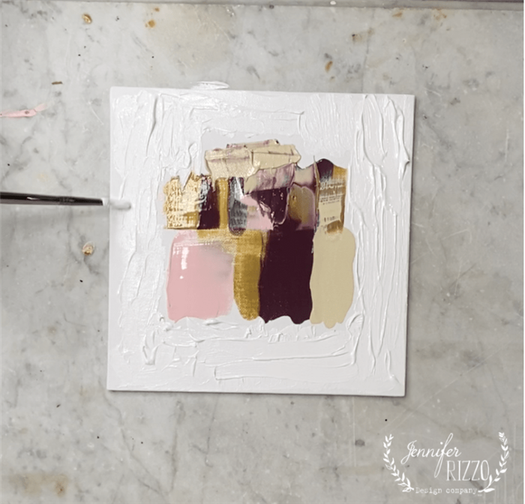
Let dry, and then you can frame your masterpiece, or just leave the plain canvas. I like it either way. This is also a good “base” art technique because once the first layer is dry, you can layer and add on top of it, including mixed media.
I hope you loved this fun technique and create beautiful art! If you love the no art skills required painting posts. You can also see how to paint a bird’s nest.
Flip your Focus

When painting anything, but especially abstract art, it is always good practice to take a step back for a while and evaluate what you’ve done. Moreover, turn the painting over, 90 degrees and 180 degrees. If the painting looks unbalanced in any one direction it may well be unbalanced in all directions. Even an upside down landscape still holds its balance (rule of thirds, remember!).
What you’re looking for is to ensure all of the elements of your painting work together and not against each other. You’re not looking for exactness or necessarily symmetry but you do want an overall composition that blends together so that you are not mounting a visual assault on your viewers eyeballs!
Edge your bets
Easily forgotten but vitally important are the paintings edges. Edges play a role in anchoring your composition and can be used to create striking effects. In fact, some artists use the edges to deliberately strike an imbalance in the painting, which of course forces the viewer into the centre to find the balanced composition. It’s a bit like building a tunnel to draw people in. Edges csn also be used to give the suggestion that there is more of the painting off the canvas. This concept is clever and can leave a viewer pondering what’s out there beyond the edge of the present canvas.
One of the fun aspects of abstract art is to ensure that there are a diversity of features to explore on the canvas. When I first started painting abstract art I was obsessed with getting my blending precise and my brush stroke lines all equal and even. This led to some very boring pieces! I’ve since learnt that variety is key and I no longer shy away from letting the painting take twists and turns here and there. If my brush stops dead on the canvas some dramatic, but subtle, marks remain and this adds to the drama on the canvas. If some of the underpainting pulls through the surface this is fine too. When I step back the painting works and when I step closer there are things to be found. It all makes for an interesting painting. Precision is great and sometimes essential but not so in abstract art, at least not mine.
Don’t Discard Disasters

Mistakes will happen. It’s just a fact of life and most certainly a fact of creating art. I learnt the hard way that if something goes wrong, at least with abstract work, it can pay to just carry out and go with it. Early on I created a piece that was one of my first attempts at complex blending. The colours were contrasting and really quite offensive on the eye. Worse yet, the centre of the painting drew one in like the centre of a dark and forbidding black hole. I actually felt uneasy looking at it. In trying to salvage something out of the wreckage that was now my artwork I decided to etch the surface with radial lines – it looked like a spider web and only served to make the painting even more creepy.
So what did I do? I ran my largest brush over the lot and wiped it out and etched a large tree into it! The tree sold within a couple of weeks. Great result, right? Not quite. Just because I hated it didn’t mean others would. And others didn’t hate it. In fact, they loved it and wanted to buy it. Awkward, as it no longer existed. Luckily I take high resolution images of everything I do so can at least sell prints and canvases of it but it’s not quite the same.
So, the moral of this story is don’t throw away something in your abstract works just because you think it’s gone wrong. It is highly likely that someone out there will think it’s great. I now keep everything! Thankfully, my stock of “also rans” is very small!
I hope my 7 tips help you to understand what lies under the bonnet (hood) of an abstract painting but if you’d like to know more about my process follow me on Instagram (@awberyart) where I often post my works in progress or visit my YouTube channel to see some of my works in action.
If you enjoyed this blog let me know with a comment and sign up for my free two-monthly newsletter.





